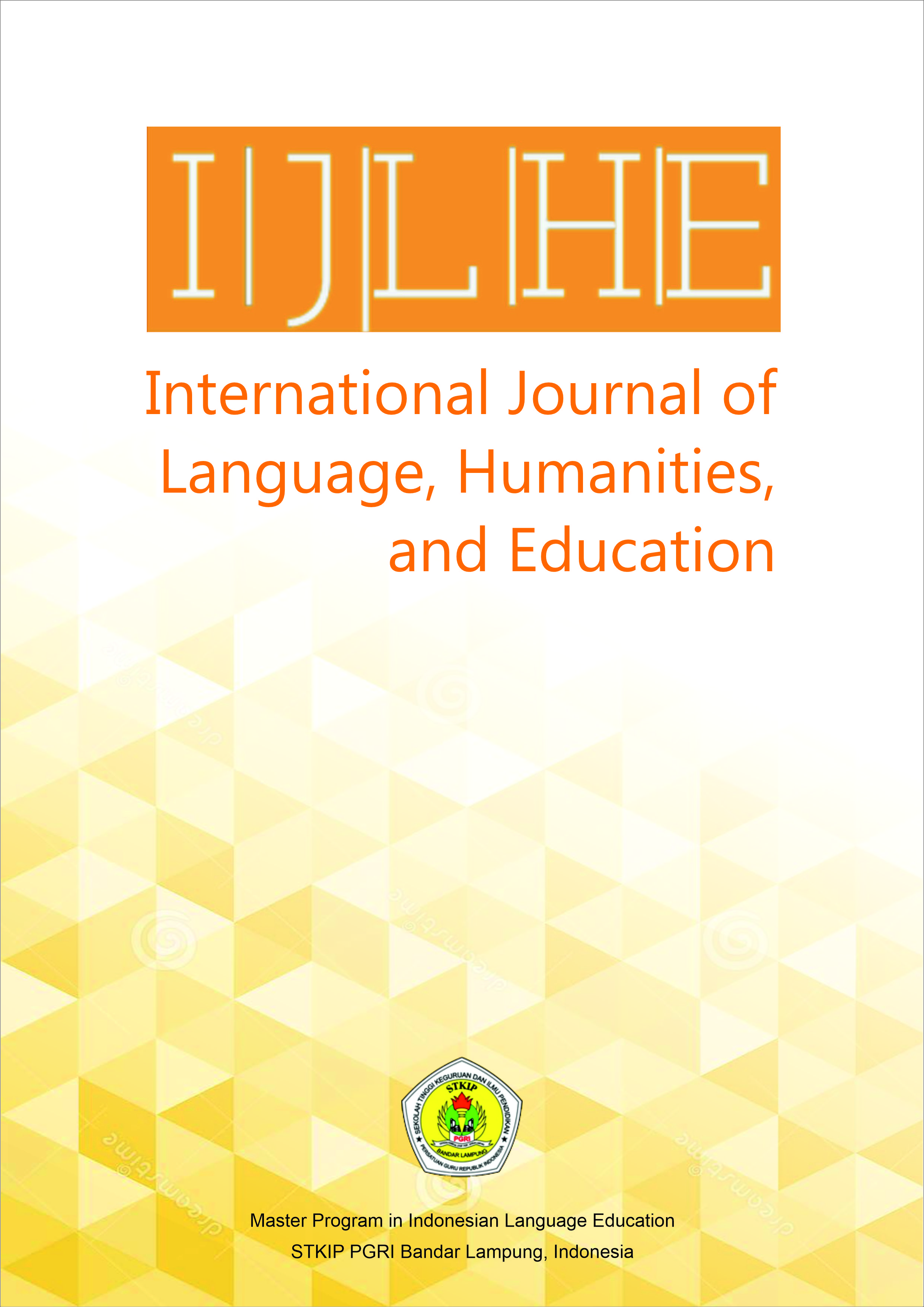The Hindi Swear Words Used by Indians: A Descriptive Qualitative Study
DOI:
https://doi.org/10.52217/ijlhe.v8i1.1816Keywords:
Forms, Functions, Hindi Swear Words, ReferencesAbstract
This research aims to (1) identify swear words used by Indians, (2) analyze their forms, (3) examine their functions, and (4) explore their references. It employs a qualitative descriptive method and was conducted in Nusa Penida, Klungkung Regency, Bali. Data were collected through document analysis and interviews with three informants selected based on specific criteria. The researcher acted as the main instrument, supported by an analysis sheet and interview guides. The findings reveal a total of 33 Hindi swear words. In terms of form, 15 are monomorphemic, 12 polymorphemic, 3 noun phrases, and 3 independent clauses. Regarding function, 18 swear words are used to discredit others, 7 to provoke, and 8 to provide emotional catharsis. As for references, the words relate to sex activity (8), excrement (2), animals (4), personal background (4), bodily functions (8), and death (1). These results show that Hindi swear words are varied in structure, purpose, and reference, reflecting both the emotional intensity and cultural context in which they are used. This study enhances the understanding of Indian sociolinguistics by demonstrating how swearing serves not only as verbal aggression or expression, but also as a reflection of societal values, interpersonal dynamics, and cultural identity.
References
Agarwal, P., Sharma, A., Grover, J., Sikka, M., Rudra, K., & Choudhury, M. (2017). I may talk in English but gaali toh Hindi mein hi denge: A study of English-Hindi code-switching and swearing pattern on social networks. In 2017 9th International Conference on Communication Systems and Networks (COMSNETS) (pp. 554–557). IEEE. https://doi.org/10.1109/COMSNETS.2017.7945452
Allan, K., & Burridge, K. (2006). Forbidden words: Taboo and the censoring of language. Cambridge University Press.
Budasi, I. G. (2012). Perbandingan ungkapan makian dalam Bahasa Indonesia dan Bahasa Bali. In Language in the Online and Offline World 3 (Vol. 7, No. 6). Petra University. https://ejournal.petra.ac.id/
Dewipayani, N. P. A. S., Suarnajaya, I. W., & Suprianti, G. A. P. (2017). Swear words used by the teenagers in Nusa Penida: A descriptive qualitative study. Jurnal Pendidikan Bahasa Inggris Undiksha, 5(2), 1–11. https://ejournal.undiksha.ac.id/index.php/JPBI
Hughes, G. (2015). An encyclopedia of swearing: The social history of oaths, profanity, foul language, and ethnic slurs in the English-speaking world. Routledge.
Jay, T. (2009). The utility and ubiquity of taboo words. Perspectives on Psychological Science, 4(2), 153–161. https://doi.org/10.1111/j.1745-6924.2009.01115.x
Miles, M. B., & Huberman, A. M. (1984). Qualitative data analysis: An expanded sourcebook (2nd ed.). Sage Publications.
Peter, R., & Simatupang, M. S. (2022). Keberagaman bahasa dan budaya sebagai kekayaan bangsa Indonesia. Dialektika: Jurnal Bahasa, Sastra, dan Budaya, 9(1), 96–105. http://repository.uki.ac.id/8567/
Rothwell, J. D. (1971). Verbal obscenity: Time for second thoughts. Western Speech, 35(4), 231–242. https://doi.org/10.1080/10570317109373711
Sajarwa, S. (2021). Swear words in French: Analysis of social class and gender. Humanus: Jurnal Ilmiah Ilmu-ilmu Humaniora, 20(2), 139–152. http://ejournal.unp.ac.id/index.php/humanus/index
Saniada, K. N., Ramendra, D. P., & Mahendrayana, G. (2023). The analysis of swear words used by the children in Poh Bergong Village. International Journal of Language and Literature, 7(2), 75–82. https://doi.org/10.23887/ijll.v7i2.32271
Tran, D. T. (2025). A comparative study of Vietnamese and English swear words: A discourse analysis perspective. Multidisciplinary Science Journal, 7(1). https://doi.org/10.31893/multiscience.2025028
Wardhaugh, R. (2006). An introduction to sociolinguistics (5th ed.). Blackwell Publishing.
Yani, K. T., Budasi, I. G., & Ramendra, D. P. (2017). A comparative study of American and Balinese swearwords. Jurnal Pendidikan Bahasa Inggris Undiksha, 5(2), 1–10. https://ejournal.undiksha.ac.id/index.php/JPBI/article/view/13612














